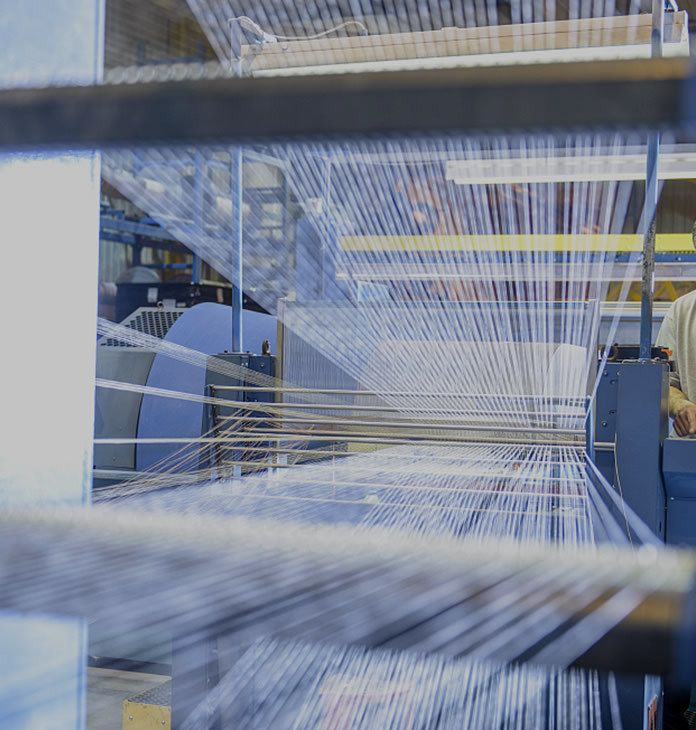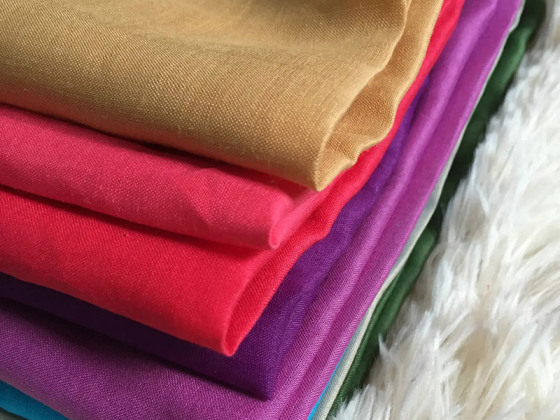Advantages and disadvantages of yarn-dyed fabrics
Time:
2023-11-02
Among the many product types in the textile industry, yarn-dyed fabrics occupy a specific market position with their unique production process and distinctive characteristics. To explore the advantages and disadvantages of yarn-dyed fabrics is of great significance to textile industry practitioners, clothing designers and consumers.
Among the many product types in the textile industry, yarn-dyed fabrics occupy a specific market position with their unique production process and distinctive characteristics. To explore the advantages and disadvantages of yarn-dyed fabrics is of great significance to textile industry practitioners, clothing designers and consumers.
First, the advantages of yarn-dyed fabrics
(A) color and pattern richness
Yarn-dyed fabrics dye the yarn before weaving, a process that enables rich color combinations and intricate patterns. By cleverly interweaving the warp and weft of different colors, a variety of pattern effects such as plaid, stripe, jacquard can be presented, and the color distribution is uniform and distinct. This unique visual effect provides a broad creative space for areas such as clothing and home decoration, satisfying consumers' pursuit of personalization and fashion. For example, the classic Scottish tartan fabric, which is made by yarn-weaving multiple colors of yarn, its unique pattern has become an enduring element of the fashion industry, widely used in clothing, accessories and home textiles.
(2) Good color fastness
Because the yarn-dyed fabric is dyed before weaving, the yarn is intertwined tightly inside the fabric, so that the dye is better fixed inside the fiber, which has a high color fastness. In the daily use process, in the face of washing, friction, light and other factors, yarn-dyed fabrics are less prone to fading and discoloration than some ordinary dyed fabrics, and can maintain its bright color and beautiful appearance for a long time. This feature is particularly important in high-end clothing, curtains, bedding and other products that need long-term use and frequent washing, not only to ensure the service life of the product, but also to reduce the decline in beauty and waste of resources caused by fading.
(3) Texture and three-dimensional sense
Yarn-dyed process gives the fabric a unique texture and three-dimensional sense. Different colors of yarn in the interweaving process against each other, superimposed, formed a rich texture and visual effect, so that the fabric in the visual more vivid, rich sense of layer. For example, some yarn-dyed jacquard fabrics, through the change of floating lines and interweaving points, so that the pattern presents a relief like effect, touch can also feel the obvious concave and convex texture, this texture and three-dimensional sense is difficult to reach ordinary printed or dyed fabrics. In the production of clothing, yarn-dyed fabrics can better shape the outline and shape of clothing, show an elegant and refined sense of quality, and enhance the overall image of the wearer.
(4) Dimensional stability
Yarn-dyed fabrics usually have good dimensional stability. In the weaving process, the tension of the warp and weft yarn is better controlled, and because of the dyeing and subsequent treatment of the yarn, the internal structure of the fiber is relatively stable, so that the fabric is not prone to serious deformation and shrinkage during washing and wearing. This advantage allows yarn-dyed fabrics to be cut and sewn more accurately in clothing production, reducing the rate of defective products caused by size changes, and improving production efficiency and product quality. At the same time, for consumers, the purchased yarn-dyed clothing can still maintain the original fit after multiple wearing and washing, increasing the practicality and durability of the product.
Second, the shortcomings of yarn-dyed fabrics
(1) High production costs
The production process of yarn-dyed fabric is relatively complex, which requires multiple pretreatment processes such as dyeing, drying, winding, etc., and then weaving. Compared with the process of dyeing the grey fabric directly with the ordinary dyed fabric, the yarn-dyed process involves more equipment, longer production cycle and higher labor costs, which lead to a substantial increase in the production cost of yarn-dyed fabric. High costs make yarn-dyed fabrics in the price is often in the high-end level, limiting its popularity in some price sensitive consumer markets, mainly for the pursuit of quality and fashion in the high-end consumer groups or specific high-end clothing, home brands.
(2) Low production efficiency
Due to the complexity of the yarn-dyed process, every step of the process, from yarn preparation to the production of the final finished fabric, requires fine operation and strict quality control. For example, in the process of yarn dyeing, it is necessary to ensure that the color of different batches of yarn is extremely consistent, otherwise it will affect the overall effect of the final fabric; In the weaving process, the weaving of complex patterns requires a higher technical level and a slower weaving speed. These factors make the production efficiency of yarn-dyed fabrics relatively low, difficult to achieve large-scale rapid production. In the rapid changes in market demand, delivery requirements are shorter and shorter today, low production efficiency has become an important challenge faced by yarn-dyed fabric manufacturers, which may lead to enterprises unable to meet customer order needs in time, affecting the market competitiveness of enterprises.
(3) Design limitations
Although yarn-dyed fabrics can achieve a rich variety of colors and patterns, there are also design limitations to a certain extent. Compared with printed fabrics, the pattern change of yarn-dyed fabrics is relatively fixed, and once the color and weaving pattern of the yarn are determined, it is difficult to flexibly modify and adjust in the later period. This requires very accurate planning and prediction of the final effect of the product in the early stage of design, otherwise, once there is a design error or market demand change, it may lead to a large number of fabric backlog or waste. In addition, the design and development of yarn-dyed fabrics requires high professional knowledge and skills, involving the integration of knowledge in many aspects such as yarn dyeing and weaving process, which has high requirements for the design team, which also limits the speed and breadth of yarn-dyed fabric design innovation to a certain extent.













